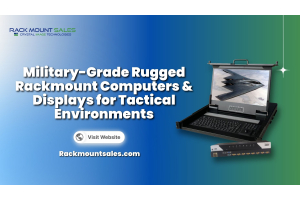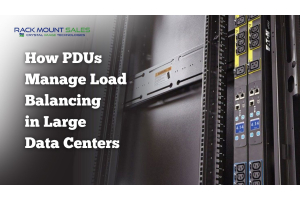Guide for Buying Rugged Industrial Monitors and Displays
With today's fast-paced industrial landscape, rugged industrial monitors and displays are in high demand. These specialized devices play a crucial role in ensuring efficient operations and reliable performance in challenging environments. Whether you're setting up a manufacturing facility, a transportation hub, or a military operation, investing in the right rugged industrial monitors and displays is essential.
In this guide, you will find useful insights and practical tips that will help you make an informed decision when shopping for rugged industrial monitors and displays. The benefits that these robust devices bring to your industrial setup, the key factors you need to consider, and the features and specifications to look for, will be discussed.
Understanding Rugged Industrial Monitors
Rugged industrial monitors are specifically designed to withstand the harsh conditions and demanding requirements of industrial environments. Unlike standard monitors, which are primarily used for office or home settings, rugged industrial monitors are built to handle extreme temperatures, humidity, dust, vibration, and shock.
One of the key features of rugged industrial monitors is their durability.In order to provide maximum protection against impacts and environmental hazards, these monitors are constructed using rugged enclosures, bezels, and panels that can withstand the rigors of industrial operations.
In addition to their sturdy construction, rugged industrial monitors offer advanced functionality and reliability. For optimal visibility even in bright lighting conditions, they are equipped with anti-glare and anti-reflective coatings for enhanced performance in industrial settings.
By understanding the unique characteristics of rugged industrial monitors, you can ensure that you select monitors that are suitable for your specific industrial environment. Assessing the environmental requirements and identifying the potential challenges your monitors may face will help you make an informed decision and choose monitors that can withstand the demands of your operations.
Assessing Environmental Requirements
To select the most suitable rugged industrial monitor for your specific needs, it's crucial to assess the environmental conditions in your industrial setting. Temperature variations, humidity levels, dust exposure, vibration, and shock resistance should all be considered.
- Identifying the specific environmental conditions in the industrial setting
- Factors to consider: temperature, humidity, dust, vibration, and shock resistance
- Understanding the impact of environmental conditions on monitor durability and performance
Display Features and Specifications
Rugged industrial monitors come in various types, each offering unique features and capabilities to meet diverse industrial requirements.
1. Display Types and Technologies: LCD, LED, and Touchscreen
Rugged industrial monitors come in different display types and technologies that play a crucial role in their performance and suitability for specific environments. Let's explore the main types: LCD, LED, and touchscreen.
1.1. LCD Displays: LCD (Liquid Crystal Display) technology offers reliability, versatility, and excellent image quality. It uses liquid crystals to control the passage of light, resulting in sharp images, vibrant colors, and energy efficiency.
1.2. LED Backlighting: LED (Light Emitting Diode) backlighting is the standard in modern rugged industrial monitors. It provides energy efficiency, better brightness levels, contrast ratios, and color accuracy.
1.3. Touchscreen Functionality: Touchscreen monitors offer enhanced usability and convenience. Capacitive and resistive touchscreens are commonly used, providing responsiveness and multitouch capabilities.
Understanding these display types and technologies helps in selecting the most appropriate rugged industrial monitor for specific needs.
2. Resolution, Brightness, Contrast Ratio, and Viewing Angles
Resolution, brightness, contrast ratio, and viewing angles are important factors to consider when choosing a rugged industrial monitor.
2.1. High-Resolution Displays: Opt for a monitor with a high-resolution display for crisp and clear visuals, allowing for accurate representation of intricate designs and critical data.
2.2. Brightness Levels: Adjustable brightness levels are crucial for visibility in different lighting conditions. A high brightness is ideal for outdoor use or brightly lit environments, while a low brightness is beneficial for low light environments.
2.3. Contrast Ratio: A higher contrast ratio provides sharper and more vibrant images with better color reproduction, enhancing visual quality and differentiation of elements.
2.4. Viewing Angles: Wide viewing angles ensure optimal visibility from different positions, allowing multiple individuals to view the screen simultaneously with consistent image quality.
Considering these factors will help you choose a rugged industrial monitor that meets your specific requirements.
3. Size and Aspect Ratio Considerations
The size and aspect ratio of a rugged industrial monitor play a crucial role. Here are some key factors to consider:
3.1. Space Limitations and Application Requirements: Assess the available space and determine the optimal monitor size based on your specific application needs.
3.2. Screen Real Estate: Larger displays offer more screen real estate, allowing for better data visualization and multitasking capabilities.
By considering these factors, you can select a rugged industrial monitor that perfectly fits your workspace and meets your application requirements.
4. Special Features
In addition to the essential display specifications, rugged industrial monitors may offer special features that enhance usability and performance.
4.1. Sunlight-Readable Displays: Sunlight-readable displays are designed to deliver optimal visibility even in bright outdoor environments. These monitors utilize advanced technologies to minimize glare and maintain clear visibility, allowing users to work efficiently in challenging lighting conditions.
4.2. Anti-Glare and Anti-Reflective Coatings: In environments with varying lighting conditions, anti-glare and anti-reflective monitors are ideal for reducing eye strain and improving clarity and reducing reflections on the screen.
By considering rugged industrial monitors with these special features, you can ensure enhanced visibility and usability, enabling seamless operation in demanding industrial settings.
Durability and Protection
Rugged industrial monitors are designed to withstand the demanding conditions of industrial environments. Here are two key considerations for durability and protection:
- Ingress Protection (IP) Ratings: Rugged monitors are assigned IP ratings that indicate their resistance to water and dust. Higher IP ratings mean better protection. For example, an IP65-rated monitor offers excellent dust protection and can withstand low-pressure water jets.
- Construction Materials: Rugged monitors use durable materials like aluminum or stainless steel for their enclosures, bezels, and panels. These materials provide robust protection against corrosion, impacts, and vibrations.
Considering the IP rating and construction materials ensures you choose a rugged monitor that can handle the challenges of your industrial setting. This guarantees reliable performance and longevity, minimizing downtime and maximizing productivity.
Customization and Mounting Options
When choosing a rugged industrial monitor, it's important to consider the customization capabilities to ensure seamless integration with your existing systems. Here are a few key points to keep in mind:
- Compatibility with Existing Systems: Assess the compatibility of the monitor with your current setup. Look for monitors that can easily integrate with your existing infrastructure, allowing for a smooth transition and minimizing any potential disruptions.
- Additional Inputs and Outputs: Consider the need for additional inputs and outputs to connect peripheral devices or expand the functionality of the monitor. To accommodate various devices and equipment, choose monitors with HDMI, VGA, USB, or Ethernet interfaces.
Cost Considerations
When purchasing rugged industrial monitors, it's crucial to strike a balance between cost and the desired features and performance. Here are some key considerations to keep in mind:
- Price vs. Performance: Assess the capabilities and durability of the monitor in relation to its cost. While it's tempting to opt for the most affordable option, it's essential to ensure that the monitor meets your specific requirements and can withstand the demands of your industrial environment. Consider factors such as display quality, ruggedness, and reliability to make an informed decision.
- Long-Term Cost Savings: It is important to take into account long-term cost benefits, such as energy efficiency, as monitors with lower power consumption can result in significant electricity savings over the years. Additionally, assess the maintenance requirements and associated costs, as well as the estimated lifespan of the monitor. Investing in a high-quality, durable monitor may initially cost more but can provide long-term cost savings by minimizing the need for frequent replacements or repairs.
By carefully evaluating the price-performance ratio and considering long-term cost benefits, you can make a well-informed decision when purchasing rugged industrial monitors. Remember to prioritize the features and durability that align with your industrial requirements while also being mindful of your budget constraints.
Conclusion
Rugged industrial monitors are at the forefront of technological advancements, revolutionizing industrial environments across multiple sectors. With their robust construction, versatile features, and specialized functionalities, these monitors are crucial for improving productivity, optimizing operations, and ensuring reliable performance in challenging industrial settings. By understanding the latest trends and innovations in rugged industrial monitor design, businesses can make informed decisions to enhance their operations and stay ahead in the dynamic industrial landscape.
In this fast-paced era of technological advancements, the future of rugged industrial monitors looks promising. As emerging trends such as higher resolutions, improved touch functionality, and customization options continue to evolve, these displays will play an increasingly significant role in driving industrial efficiency and productivity. Embrace the possibilities offered by rugged industrial monitors and secure a competitive edge in your industry. Invest wisely in high-quality equipment from reputable manufacturers to unlock the full potential of these innovative displays.











